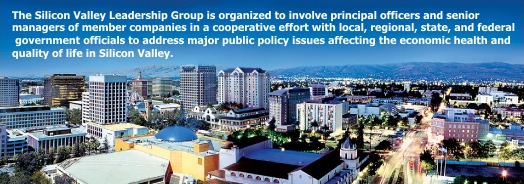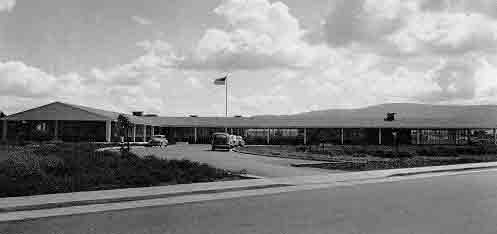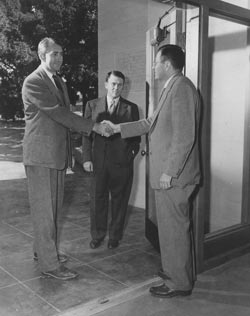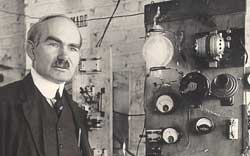
- •Предисловие
- •Содержание:
- •The United States of America
- •One nation, under God, with Liberty and Justice for all.
- •The United States
- •Us State Nicknames
- •Illinois
- •Indiana (no official nickname)
- •Vermont
- •Virginia
- •Some of the benchmark events of American history mentioned in the “Gallery of American Presidents”:
- •Монеты сша
- •White House History
- •About the Building
- •The Oval Office
- •Eisenhower Executive Office Building
- •Camp David
- •Air Force One
- •Us Government The Executive Branch
- •The President
- •The Vice President
- •Executive Office of the President
- •The Cabinet
- •Department of Agriculture
- •Department of Commerce
- •Department of Defense
- •Department of Education
- •Department of Energy
- •Department of Health and Human Services
- •Department of Homeland Security
- •Department of Housing and Urban Development
- •Department of the Interior
- •Department of Justice
- •Department of Labor
- •Department of State
- •Department of Transportation
- •Department of the Treasury
- •Department of Veterans Affairs
- •The Legislative Branch
- •The Legislative Process
- •Powers of Congress
- •Government Oversight
- •The Judicial Branch
- •The Supreme Court of the United States
- •The Judicial Process
- •The Constitution
- •Why a Constitution?
- •The Constitutional Convention
- •Ratification
- •The Bill of Rights
- •Elections & Voting
- •The great seal of the united states
- •Designing a Seal The First Committee
- •The Second Committee
- •The Third Committee
- •Charles Thomson’s Proposal
- •The Final “Device”
- •Charles Thomson’s “Remarks and Explanation,” Adopted by the Continental Congress, June 20, 1782
- •Its simplicity and lack of clutter. His design was
- •Meaning of the Seal
- •Designs of the Reverse
- •In 1782, no die has ever
- •Uses of the Seal and the Coat of Arms
- •Requests To Use the Great Seal and Coat of Arms
- •Great Seal Today
- •The Great Seal of the United States
- •The Great Seal on Display
- •Langley
- •Central intelligence agency
- •The work of a nation. The centre of intelligence. About cia
- •Today's cia
- •Mission
- •The cia Campus: a Walk Outside Headquarters
- •Nathan Hale Statue
- •Memorial Garden
- •The cia Campus: New Headquarters Building
- •The History of the Scattergood-Thorne Property
- •Cia Glossary
- •Laughing at cia?
- •The lapd, the fbi and the cia
- •Federal Bureau of Investigation
- •Laughing at fbi?
- •An fbi investigation
- •9/11 Warnings and fbi/cia Bungling
- •Late-Night Jokes About Sept. 11 Intelligence Failures
- •Foggy Bottom
- •Hitting Bottom in Foggy Bottom The State Department suffers from low morale, bottlenecks, and bureaucratic ineptitude. Do we need to kill it to save it? by matthew armstrong | september 11, 2009
- •The Watergate hotel
- •Us Department of State Headquarters
- •History
- •Duties and responsibilities
- •American entertainment
- •Hollywood
- •Hollywood glossary
- •Capitol Records
- •.. 1750 Vine Street, Hollywood, ca. / (323) 462-6252
- •On Hollywood Boulevard: from Gower Street to La Brea Avenue, and on Vine Street: from Yucca Street to Sunset Boulevard.
- •Hollywood glossary
- •"Celebrity Death Sites" a list of celebrities, whose deaths were the result of murder or suicide, including the location of their death sites
- •John Belushi's Death Site"
- •John Belushi's Death Site.
- •Silicon Valley
- •Вот, что мне особенно понравилось (для людей, изучающих английский, может показаться странным, что некоторые слова попали в разряд «чудных» с точки зрения американца).
- •Distinctive features Phonology
- •Grammatical aspect marking
- •Ebonics Translations
- •Ebonics Prayer
- •Nursery Rhymez
- •The us army
- •Army Commands (acom):
- •Army Service Component Commands (ascc):
- •Direct Reporting Units (dru):
- •Mission
- •“The Army Goes Rolling Along”
- •Пример описания боевых характеристик: Patriot
- •Entered Army Service
- •Description and Specifications
- •Manufacturer
- •Униформа армии сша
- •Знаки различия званий уорент-офицеров (Warrant Officers).
- •Знаки различия званий младших офицеров (Сompany Grade Officers).
- •Знаки различия званий старших офицеров (Field Grade Officers).
- •Знаки различия званий генералов (General Officers).
- •Наградная система армии сша
- •2. Крест за выдающуюся службу (Distinguished Service Cross).
- •8. Медаль Министерства обороны за отличную службу (Defense Superior Service Medal).
- •9. «За боевые заслуги», Орден Почетного Легиона (Legion of Merit).
- •Military Humour
- •Спецназ сша/us special forces
- •Рейнджеры / us Army Rangers
- •Спецподразделения Военно-воздушных сил сша / us Air Force Special Operations
- •Спецподразделения военно-морского флота сша, известны как "морские котики"/us Navy Seals
- •Отряд "Дельта" / Delta Force
- •Разведка Морской Пехоты сша / us Marine Force Recon
- •Воздушно-десантные войска/ us Airborn
- •Десятая Горная Дивизия/10th Mountain Division
- •Полувоенные силы Центрального Разведывательного Управления/cia Paramilitary Forces
- •Начало формы Конец формы
- •Sightseeing in america
- •Visual Landmarks New York
- •Районы Нью-Йорка
- •Управление
- •Культура
- •Планировка города
- •Транспорт
- •Сигналы опасности
- •Мосты и туннели
- •Связь в Нью-Йорке
- •Что раздражает ньюйоркцев?
- •Manhattan
- •Башня Банка Америки (Bank of America Tower)
- •Эмпайр Стейт Билдинг Why do we call New York City the Big Apple?
- •Statue of Liberty
- •The National Park Service commemorates the anniversary of the Statue of Liberty annually on October 28th. Mount rushmore
- •The grand canyon
- •Niagara Falls
- •Alcatraz
- •History
- •Military history
- •Military prison
- •Prison history Federal prison
- •Notable inmates
- •Post prison years
- •Native American occupation
- •Landmarking and development
- •Arlington National Cemetery
- •Placing of burial flag over a casket
- •A firing party
- •Сто вопросов и ответов о сша one hundred questions and answers about
- •2. What are the ingredients of a traditional American Thanksgiving dinner?
- •3. What do the terms "melting pot" and "salad bowl" mean to u.S. Society and culture?
- •Impressionists?
- •67. Which American President was the first to live in the White House?
- •Isbn 987–5–932050–42–2
- •191104, Г. Санкт-Петербург, наб. Р. Фонтанки, 32/1
Silicon Valley
Словосочетание Силиконовая Долина давно уже стало нарицательным, оно обозначает зону высоких технологий (High Technology) – определенную территорию, на которой сконцентрированы объекты электронной и компьютерной индустрии, научно-исследовательские и образовательные центры, высококлассные IT-специалисты и венчурные фирмы, не боящиеся инвестировать в сферу высоких технологий.

Словарь современных географических названий дает такое определение: «СИЛИКОНОВАЯ ДОЛИНА» - журналистское клише для обозначения долины Санта-Клара в штате Калифорния (США), к ЮВ. от Сан-Франциско. Название обязано пр-ву полупроводников и электронной техники. Некогда сел.-хоз. район, долина ныне застроена городами, которые протянулись цепочкой от зал. Сан-Франциско до г. Сан-Хосе. Ядром роста оказался Стэнфордский ун-т в Пало-Альто, где с 1940-х годов велись исследования в области электроники. Первый крупный завод ЭВМ был открыт в 1956 г. фирмой IBM в г. Сан-Хосе. С. д. – олицетворение высокотехнол. пром-сти (особенно радиоэл. и ракетостроения) и высокого уровня жизни. До 1950-х годов долина Санта-Клара славилась своими сливовыми садами («черносливовая столица мира»)».
Немного этимологии
Термин Silicon Valley – был придуман калифорнийским предпринимателем Ральфом Вэрстом (Ralph Vaerst). Его друг, журналист Дон Хофлер (Don Hoefler), впервые обнародовал этот термин 11 января 1971 г.: он применил его как название цикла своих статей – Silicon Valley USA – в еженедельнике Electronic News. В этих статьях Хофлер писал о местечке Санта Клара, что южнее Сан-Франциско, в котором были сосредоточены штаб-квартиры крупнейших IT-компаний.
Силиконовая Долина или Кремниевая?
Конечно, название Силиконовая Долина – ошибочное: русскоязычный вариант названия «Силиконовая долина» возник из-за схожести написания английских терминов silicon (кремний) и silicone (силикон) (ложные друзья переводчика). В англоязычных же источниках «Силиконовой долиной» (то есть англ. Silicone Valley) могут называть другое место — Долину Сан-Фернандо (также известную как «порнодолина»). Очевидно, что со словом силикон у многих возникают совсем не цифровые ассоциации. Формально это так, но в России уже давно прижилось название Силиконовая Долина, оно более привычно. Но если кому-то нравится говорить Кремниевая Долина, – что ж, о вкусах не спорят, ведь речь идет об одном и том же!
Кремниевую Долину образуют около 30 городов: Ист-Пало-Альто, Купертино, Кэмпбелл, Ливермор, Лос-Алтос, Лос-Алтос-Хилз, Лос-Гатос, Маунтин-Вью, Милпитас, Мэнло-Парк, Ньюарк, Пало-Альто, Плезантон, Редвуд-Сити, Сан-Хосе, Саннивейл, Санта-Клара, Санта-Круз, Саратога, Скотс-Вэли, Трейси, Фримонт, Юнион-Сити.
Университеты Кремниевой Долины:
• Northwestern Polytechnic University (Fremont);
• Carnegie Mellon University;
• San Jose State University;
• Santa Clara University;
• Stanford University.
В состав Кремниевой Долины входит около 7 тыс. (!) компаний. Среди них всемирно известные:
• Adobe Systems;
• Advanced Micro Devices (AMD);
• Apple Inc.;
• Cisco Systems;
• Dolby Laboratories Inc.;
• eBay;
• Google;
• Hewlett-Packard;
• Intel;
• Intuit;
• Juniper Networks;
• Maxtor;
• National Semiconductor;
• Nintendo;
• NVIDIA Corporation;
• Oracle Corporation;
• SanDisk;
• Sun Microsystems;
• Symantec;
• Yahoo!
Те IT-корпорации, головные офисы которых находятся в других местах (так уж исторически сложилось!), считают своим долгом – и честью для себя! – иметь свои представительства в Кремниевой Долине, например:
• 3Com;
• Adaptec;
• Foundry Networks;
• Fujitsu;
• Hitachi Global Storage Technologies;
• McAfee;
• Microsoft;
• Netscape;
• NeXT Computer, Inc.;
• Palm, Inc.;
• PayPal;
• Rambus;
• Silicon Graphics;
• VeriSign;
• Veritas Software;
• VMware.
A Few Quotes From... Silicon Valley History
Silicon Valley is an area that "located on the San Francisco, California, peninsula, radiates outward from Stanford University. It is contained by the San Francisco Bay on the east, the Santa Cruz Mountains on the west, and the Coast Range to the southeast. At the turn of the century, when fruit orchards predominated, the area was known as the Valley of Heart's Delight ", as Carolyn E. Tajnai, former Director (1988 - 1997) of Stanford Computer Forum begins one of her comprehensive online-manuscripts that described Silicon Valley history. When Stanford University started to have some financial problems, the authorities of university tried to solve the problems by leasing part of the university land to high-tech companies for 99 years. " In the 1950's, the idea of building an industrial park arose. The university had plenty of land over 8,000 acres....but money was needed to finance the University's rapid postwar growth. The original bequest of his farm by Leland Stanford prohibited the sale of this land, but there was nothing to prevent its being leased. It turned out that long-term leases were just as attractive to industry as outright ownership; thus, the Stanford Industrial Park was founded.
The goal was to create a center of high technology close to a cooperative university. It was a stroke of genius, and Terman, calling it “our secret weapon,'' quickly suggested that leases be limited to high technology companies that might be beneficial to Stanford. In 1951 Varian Associates signed a lease, and in 1953 the company moved into the first building in the park. Eastman Kodak, General Electric, Preformed Line Products, Admiral Corporation, Shockley Transistor Laboratory of Beckman Instruments, Lockheed, Hewlett-Packard, and others followed soon after." Fred Terman, The father of Silicon Valley by Carolyn Tajnai.
The First building of Silicon Valley
In 1995 William Hewlett decided to describe in more details his own concept of Silicon Valley's birth.
Supernova
According to Rogers and Larsen, in 1912 "de Forest and two fellow researchers for the Federal Telegraph Company, an early electronics firm, leaned over a table watching a housefly walk across a sheet of paper. They heard the fly's foot steps amplified 120 times, so that each step sounded like marching boots. This event was the first time that a vacuum tube had amplified a signal; it marked the birth of electronics and opened the door for the development of radio, television, radar, tape recorders, and computers." Also Rogers and Larsen add that, "Lee de Forest had a Stanford University connection; his work was partly financed by Stanford officials and faculty." Links Between Stanford University and Industry, by Carolyn Tajnai, 1995 Supernova of the Silicon Valley: Can we really see it ? According to astrophysicist Joseph Shklovski (lectures, 1981) the total level of energy produced by human civilization during the last 300 years of industrial revolutions, is still about one hundredth of a percent of the total energy flow that reaches the surface of the earth from the sun. Meanwhile in recent decades of info-tech revolution, the total level of energy that earth eradiates to space comes to a million times more than it would have done naturally as the planet heated to 300 K. From this point, for the last couple of decades, Earth outran planet-giants Jupiter and Saturn and became comparable to Sun. So, for a radio-telescope's observer from outer space, the earth's info-tech revolution looks like the birth of a new bright star on the cold Earth-planet. Source: "National Information Resources", by Gregory Gromov, Nauka, 1984, p.15 Silicon Valley Entrepreneurial Phenomenon? Let us take a look again on the live example. Astronomy Ph.D. Frank Levinson entered optics tech 1980 with Bell Labs. Left 1988 to start Finisar fiber optics -- high speed networking company -- with $60,000. According to the Forbes magazine Finisar worth $8 billion in 2000. Frank clarifies below his personal viewpoint on the sociological nature of Silicon Valley Entrepreneurial Phenomenon: Despite its many contributions to the world economy, the technical community here in Silicon Valley is actually much smaller than most people believe. People end up making connections in strange ways and often these ties last for many years... My wife Wynnette and I went to dinner at the Flea Street Cafe in Menlo Park recently with a small group to hear a presentation on saving endangered species of domesticated animals such as the Cotswold Lamb. This farm and the organization that supports it was started by Robyn Shotwell Metcalfe...Robyn’s husband is Bob Metcalfe, one of the two inventors of Ethernet. Bob and Dave Boggs invented Ethernet when they were scientists at Xerox Palo Alto Research Center (PARC) in the 1970s.
|
Silicon Valley History Milestones:
1891—Stanford University is founded by Governor Leland and Jane Stanford.
1903—Valdemar Poulsen demonstrates the first arc radio transmitter for high-quality voice transmission in his Palo Alto laboratory. He later invents the first practical device for magnetic sound recording and reproduction.
1912—Lee de Forest invents the vacuum tube amplifier in Palo Alto. His “audion” became the foundation for radio, radar, television, computers, and the electronics age. Stanford faculty and officials helped finance the work, the first of many cooperative partnerships between higher education and Silicon Valley.
1930’s—Professor Frederick Terman is recruited by Stanford University and starts a lifelong promotion of the benefits of the Valley. Later, Terman becomes known as the father of Silicon Valley.
1937—Encouraged by Terman, William Hewlett and David Packard start a company to produce their audio-oscillator. Walt Disney becomes their first customer, purchasing the product for use on the film Fantasia.
1937—Stanford professor William Hansen teams with brothers Sigurd and Russell Varian to develop the klystron tube. Their work continues through WWII and leads to the development of radar and the 1948 founding of Varian Associates.
1946—The Stanford Research Institute is founded to support non-profit research.
1951—Carl Djerassi invents synthetic progesterone, "the pill", in a Mexico City laboratory. Later, Stanford's Prof. Fred Terman recruited Djerassi and Syntex to set up a research center, and later corporate headquarters, at the Stanford Industrial Park
1951—Stanford Industrial Park is established as a “center of high technology close to a cooperative university.” Varian Associates, General Electric, and Eastman Kodak quickly sign leases.
1952—IBM locates a key research facility to the valley.
1956—Dr. William Shockley founds Shockley Transistor Corporation to produce semiconductor-based transistors to replace unreliable vacuum tubes. Early employees read like a who’s who of the high-technology future.
1956—Lockheed Corporation locates an aircraft division in Stanford Industrial Park.
1958—Robert Noyce, Gordon Moore and six other engineers from Shockley Transistor found Fairchild Semiconductor, the first company to mass produce integrated circuits.
1958—NASA moves a research facility to the valley.
1963 —Syntex Corporation and Varian form joint venture Synvar Associates to intertwine high technology and medical science.
1968—Douglas Engelbart and team at the Stanford Research Institute (now SRI International) give first public demonstration of the computer mouse, windows, and networking.
1968—Alejandro Zaffaroni leaves Syntex to form Alza and develop new technologies for time-release medications.
1968—Gordon Moore and Robert Noyce found Intel.
1970—Intel introduces first 1k DRAM chip.
1971—Alan Shugart invents the floppy disk for data storage.
1973—Intel introduces 8088 CPU and ushers in the new era of the microprocessor.
1973—Stanley N. Cohen of Stanford University and Herbert W. Boyer of UC San Francisco invent a technique for splicing genes, leading to the formation of the bio-tech industry.
1974—Development of the Graphical User Interface (GUI) at the Xerox Palo Alto Research Center (PARC) led to the intuitive design of Apple's Macintosh computer and Microsoft Windows.
1975—The Homebrew Computer Club is founded to experiment with home computers. Club members go on to found nearly 20 computer companies.
1976—Homebrew founder Steve Wozniak teams with Steve Jobs to form Apple Computer and build the first microcomputer in Jobs' garage in Cupertino.
1970's—Relational database technology invented at IBM's Almaden Research Center.
1982—The Stanford University Network is the catalyst behind the founding of Sun Microsystems. Silicon Graphics uses the same network chips to create its first graphic workstations.
1984—Cisco Systems is founded by Leonard Bosack and Sandra Lerner.
1989—Don Eigler, a researcher at IBM’s Almaden Research center, uses nanotechnology to spell “IBM” with 35 xenon atoms.
1993—Stanford Professor Jim Clark hires Mosaic web browser pioneer Mark Andreesen to found Mosaic Communications, predecessor to Netscape Communications Corporation and the browser that made the Internet an everyday tool.
1994—Jerry Yang and David Filo start a directory of websites that explodes into Yahoo!.
2003—Google purchases Pyra Labs to support blogs, today’s online community forums.
Glossary:
Stroke of a genius |
Гениальная мысль, гениальный ход
|
Be instrumental in smth (doing smth) |
Способствовать, играть ведущую роль, внести большой вклад |
Set the stage for |
Предварять, положить начало
|
Provost |
Проректор в американских университетах |
Amplifier |
Здесь: усилитель звука
|
Info-tech revolution |
Революция информационных технологий |
Outrun |
Перегнать, обогнать
|
Fiber optics |
Волоконная оптика
|
Ethernet |
Технология, связывающая компьютеры в локальной сети. В отличие от Internet, Ethernet – внутренняя сеть |
Arc radio transmitter |
Дуговой радиопередатчик (с дуговым генератором) |
Vacuum tube amplifier |
Ламповый усилитель
|
The Pill |
Противозачаточная таблетка, оральный контрацептив |
Semiconductor-based |
На полупроводниках
|
Integrated circuit |
Микросхема
|
Time-release medications |
Медикаменты с пролонгированным действием |
DRAM (dynamic random access memory) |
Динамическая оперативная память (в отличие от статической), динамическое запоминающее устройство с произвольной выборкой |
Floppy disc |
Дискета
|
CPU (central processing unit) |
Центральный вычислительный блок, процессор |
Genes splicing |
соединение частей различных генов или соединение экзонов в процессе синтеза иРНК |
Relational database |
Реляционная база данных (отношения между данными)
|
"The Americans are identical to the British in all respects except, of course, language."
Oscar Wilde
Очень любопытным показался мне словарь одного американца Терри Глидта (Terry Gliedt).
«United Kingdom English for the American Novice»
Терри начал собирать слова, когда жил в Великобритании. Именно в то время он неожиданно понял, что «английский» и «американский» языки имеют намного меньшего общего, чем принято полагать. Но основная проблема, по его мнению, не в том, что ты чего-то не понял, а в том, что ты подумал, что понял.
В словаре идет толкование «английских» слов и выражений (толкование происходит на «американском» языке), причем объясняются лишь те значения «английских» слов, которые отличаются от «американских», или вообще не имеют «американского» значения.
Произношение указано в скобках в тех случаях, если оно не отвечает ожиданиям среднестатистического американца.
Терри Глидт проживал в южной части туманного Альбиона, поэтому его словарь имеет некоторый уклон в сторону «южного английского».
Последнее издание словаря насчитывает 619 словарных статей, дающих определение 800 понятиям.
"Giving English to an American is like giving sex to a child. He knows it's important but he doesn't know what to do with it." Adam Cooper (19th century)
"We (the British and Americans) are two countries separated by a common language." G.B. Shaw
The Englishman commented to the American about the "curious" way in which he pronounced so many words, such as schedule (pronounced shedule). The American thought about it for a few moments, then replied, "Perhaps it's because we went to different shools!"




